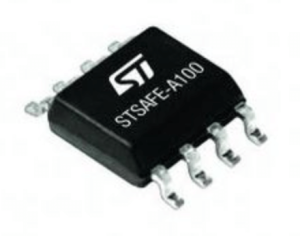
Security Integrated Circuits ( ICs) are specialized semiconductor devices designed to protect sensitive data, authenticate systems, and enable secure transactions in electronic systems. As cyber threats grow increasingly sophisticated, these chips have become critical components in:
- Financial systems (payment cards, POS terminals)
- IoT devices
- Government ID systems
- Automotive electronics
- Enterprise hardware security modules
Table of Contents
Toggle2. Types of Security ICs
2.1 Secure Microcontrollers
- Integrates cryptographic accelerators + secure storage
- Common in smart cards (e.g., EMV chips)
- Example: NXP A71CH (ECC-based authentication)
2.2 Trusted Platform Modules (TPM)
- Compliant with TPM 2.0 specification (ISO/IEC 11889)
- Used for secure key generation/storage in PCs/servers
- Manufacturers: Infineon, STMicroelectronics
2.3 Hardware Security Modules (HSM)
- High-security ICs for enterprise applications
- Supports FIPS 140-3 Level 3/4 certification
- Features:
• Tamper-responsive packaging
• Environmental attack sensors
• Zeroization upon intrusion detection
2.4 Smart Card ICs
- Contact/contactless interfaces (ISO/IEC 7816, 14443)
- Advanced models support:
• Java Card OS
• GlobalPlatform secure element standards
• Multi-application frameworks
3. Core Security Technologies
3.1 Physical Security Layers
- Tamper-resistant packaging:
• Meshed security layers
• Active shield technology (detects physical probing) - Environmental sensors:
• Voltage/clock/frequency monitors
• Temperature/light/UV detectors
3.2 Cryptographic Engines
- Symmetric crypto:
• AES-256 (FIPS PUB 197)
• PRESENT (ISO/IEC 29192-2) - Asymmetric crypto:
• ECC (NIST curves P-256/P-384)
• RSA-4096 - Post-quantum algorithms:
• CRYSTALS-Kyber (NIST PQC finalist)
• SPHINCS+ (hash-based signatures)
3.3 Secure Boot & Firmware Protection
- Chain of trust implementation
- Measured boot with PCR (Platform Configuration Registers)
- Anti-rollback protection via monotonic counters
4. Key Security Standards
| Standard | Scope | Certification Level |
|---|---|---|
| Common Criteria EAL 6+ | Hardware attack resistance | Up to EAL 7 |
| FIPS 140-3 | Cryptographic module validation | Levels 1-4 |
| EMVCo | Payment card security | L1/L2/L3 |
| ISO 27001 | Information security management | Organizational |
5. Real-World Applications
5.1 IoT Device Security
- Secure provisioning of device identities
- TLS 1.3 acceleration for encrypted comms
- Example: Microchip ATECC608A (AWS IoT Core-qualified)
5.2 Automotive Security
- EVITA project standards for vehicle networks
- Hardware-enforced ECU authentication
- V2X (Vehicle-to-Everything) message signing
5.3 Digital Identity Systems
- ePassports (ICAO 9303 standard)
- National ID cards with biometric matching
- Secure access chips for enterprise badges
6. Design Challenges
6.1 Security vs Cost Tradeoffs
- Advanced security features increase die area by 15-30%
- Certification processes add 6-18 months to development
6.2 Threat Evolution
- Emerging attack vectors:
• Laser fault injection
• Electromagnetic glitching
• Semi-invasive photon analysis
6.3 Supply Chain Risks
- Counterfeit chip detection
- Secure provisioning of initial keys
- Anti-cloning measures (PUF technology)
7. Future Trends (2024-2030)
7.1 Post-Quantum Migration
- NIST-approved PQC algorithm integration
- Hybrid crypto implementations
7.2 AI-Driven Security
- On-chip ML for anomaly detection
- Adaptive response to attack patterns
7.3 Advanced Packaging
- 3D-secured chiplets with interposer shielding
- Heterogeneous integration with secure enclaves
8. Selection Criteria
When choosing security ICs, evaluate:
- Certifications: FIPS/Common Criteria level matching use case
- Crypto Agility: Ability to update algorithms post-deployment
- Power Profile: Critical for battery-powered IoT devices
- Interface Support: I²C, SPI, ISO 7816, NFC, etc.
- SDK Quality: Development tools and middleware availability
Conclusion
Security ICs form the hardware root of trust in modern electronic systems. As regulations like EU Cyber Resilience Act and NIST SP 800-193 gain traction, their adoption will become mandatory in critical infrastructure. Designers must balance security requirements with cost/performance constraints while planning for quantum-resistant upgrades.
4.8/5 - (26 votes)
I am Jody, your trusted IC chips supplier with extensive experience in providing high-quality, reliable, and innovative semiconductor solutions. Committed to excellence, I specialize in delivering authentic components, competitive pricing, and exceptional customer service to meet the needs of manufacturers, engineers, and businesses worldwide. Partner with me for your electronic component needs.
Latest posts by Jody (see all)
- Everything You Need To Know About Limit Switch - May 21, 2025
- Everthing You Should Know About Rheostat - May 20, 2025
- Everything You Need To Know About Reversing Contactor - May 19, 2025






